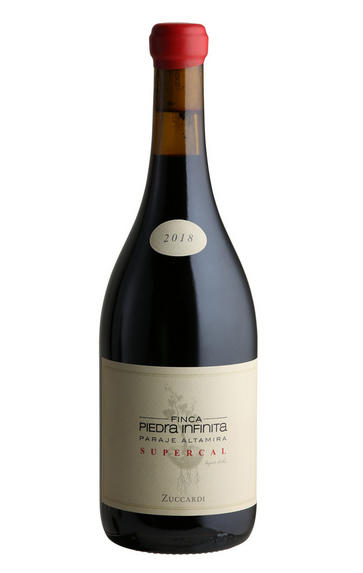
2018 Familia Zuccardi, Finca Piedra Infinita, Gravascal, Mendoza, Argentina
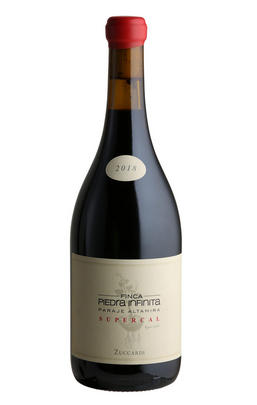
Critics reviews
The 2018 Finca Piedra Infinita Gravascal has notes reminiscent of some wines from the Northern Rhône, a combination of orange peel, blood and iron, denoting freshness and minerality, with a chalky sensation and a finish that is a mixture of juiciness, stoniness, saltiness and texture. It comes from a 0.51-hectare plot in the Piedra Infinita. The wine fermented in concrete with indigenous yeasts and matured in concrete until bottling. I think they have fine-tuned these single-plot wines tremendously since the initial and almost experimental 2015; in this 2018 wine, I found lots of similarities with the Finca Piedra Infinita bottling—it really excels. It finishes with a sapid and salty sensation and marked chalkiness. Finesse, elegance, simply superb! 1,100 bottles were filled in August 2019.
Drink 2021 - 2030
Luis Gutiérrez, The Wine Advocate
The 2018 Malbec Finca Piedra Infinita Gravascal from Paraje Altamira, is made with grapes from a parcel with rich in calcium carbonate and gravel soils. The 2018 was aged in concrete. This is a wine as finely tuned as a Formula 1 car with high-end styling and engineering. The austere, compact but precise nose features reductive notes of fresh cherry and plum with violets and herbs. Chalk plays a leading role in the mouth alongside a palate of pure intensity, texture and tension. The energy here contrasts with the austerity of the aromas making for a red in which texture and tension vie for prominence.
Drink 2023 - 2038
Joaquin Hidalgo, Vinous
About this WINE
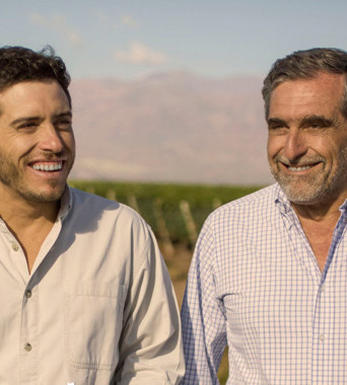
Zuccardi
In 1963, the Zuccardi family first planted grapevines in the Maipú region of Mendoza. This beautiful valley is high up in the foothills of the Andes mountains, and the mountain peaks, covered in snow year-round, dominate the background of this winery.
Zuccardi have spent years learning about the terroir in their vineyards, honing in on the different soil types and effects of altitude on the wines, and matching their blend of grapes – Cabernet Sauvignon, Cabernet Franc, Bonarda and Tempranillo as well as Malbec – perfectly to site. Their highest altitude plots are within the sub-regions of Gualtallary and Paraje Altamira, over 1000m above sea level. Here the intense sunlight and cooling effect of altitude result in elegant wines of great finesse.
Their most famous vineyard, Piedra Infinita, produces Malbecs of astonishing elegance. In 2016 the Zuccardi family opened a new winery in the heart of the vineyard. Nestled amongst the vines and made from local materials, the winery seems to be a part of the vineyard itself. Tasting and eating in the restaurant located in the winery, it is easy to understand just why these wines are described as mountain wines.
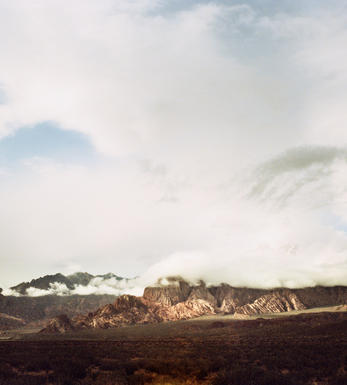
Argentina
As you would expect from the land of Tango (the dance, not the fizzy drink) Argentina produces ‘full-blooded’, seductive wines of spice and passion. Like their neighbours across the Andes in Chile, they produce excellent-value, largely red (but also increasingly white) varietal wines across all price points.
As the fifth-largest wine producing nation in the world, Argentina was long renowned for the quantity rather than quality of its wines. Since the 1990s however it has benefited enormously from the influx of investment and expertise – seemingly from every famous wine region in the world – combined with modern technology and better vineyard management and winemaking techniques. Apart from a couple of blips (notably the 1998 El Niño and the economic crisis of 2001-2), it has seen steady improvement, even if a general unwillingness to reduce yields has meant that its progress has been slower than hoped. So far it has emulated Chile’s success but has not yet, by a long chalk, surpassed it. The next Australia? Only time will tell.
Planted with vines by the Spanish colonisers in the mid-16th century, it was the widespread immigration from Italy and Spain in the mid-19th century (and later from France) that bestowed Argentina with its eclectic mix of grape varieties. The country’s trump card has turned out to be the old Bordeaux variety Malbec which, outside of Cahors, has never really made its mark in its French homeland. In Argentina it seems to have found its spiritual home, producing intense, opulent wines with refreshing acidity and increasing sophistication. In the hands of top producers and in increasingly good (and high) single vineyard sites, it is yielding some truly fine wines.
The underrated Bonarda is Argentina’s second most-planted variety, although the next best qualitatively are the improving Cabernet Sauvignon and Syrah, followed by Merlot, Tempranillo, Sangiovese, Pinot Noir and Barbera. The most interesting whites come from the fruity, floral Torrontés grape, but the there are some very fine wines from the ubiquitous Chardonnay, and it is the latter that looks set to dominate in years to come. Other white varieties include Sauvignon Blanc (in the coolest sites), Chenin Blanc, Sémillon, Pinot Gris and Viognier.
Much of Argentina is semi-desert and very dry and hot, even in the foothills of the Andes; it is only the high altitude of the vineyards and the cooling influence of the mountains that enables quality wines to be made. Irrigation is a must but it is only now that the vital step of limiting this to reduce yields is being followed by more than a small minority.
The region around Mendoza accounts for about 70 percent of Argentina’s wine production, although cooler, wetter areas like Patagonia in the south and Salta in the far north (home to the world’s highest vineyards, at an astonishing 3,000m) are increasingly influential even if quantity remains small. Salta produces very good Torrontés and Cabernet Sauvignon, while Patagonia, and particularly Río Negro, produces elegant whites and structured reds.
In Mendoza, a lot of poor-quality wine is still produced for domestic consumption but the sub-region of Luján de Cuyo produces some lovely velvety Malbecs while the cool, gravelly Maipú is best for Cabernet Sauvignon. The most exciting area in Mendoza for fine reds and whites, however, is the Uco Valley 60km south of the city. Its sub-region of Tupungato also produces Argentina’s best Chardonnay.
Recommended Producers:
Cheval des Andes, Pulenta, Alpamanta Estate
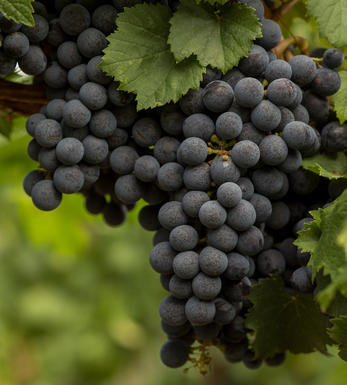
Malbec
Known as Auxerrois in Cahors, Cot in the Loire and Malbeck in Argentina, this grape has undergone a mini renaissance in the last decade, largely fuelled by its success in South America. It used to be a staple component of the Bordeaux Blend, but it never recovered fully from the 1956 frosts and its plantings there have fallen by 75% as growers have replaced it with more fashionable, and crucially, more durable grapes.
It is still grown successfully in South West France where its most famous wine is Cahors. This wine used to be black as coal and tough as leather but improvements in viticultural and vinification techniques have led to riper, softer, more approachable wines that are now amongst the best of the region.
In Argentina it is widely grown and produces deep coloured wines with generous black fruit characteristics, balanced acidity and smooth tannins. It is either bottled on its own or as part of a Bordeaux blend. In Chile it is the 3rd most widely planted grape after Pais and Cabernet Sauvignon and tends to produce firmer, more tannic wines than its Argentinian neighbours. In Chile it is often blended with Merlot and Petit Verdot.


Buying options
Add to wishlist
Description
The 2018 Finca Piedra Infinita Gravascal has notes reminiscent of some wines from the Northern Rhône, a combination of orange peel, blood and iron, denoting freshness and minerality, with a chalky sensation and a finish that is a mixture of juiciness, stoniness, saltiness and texture. It comes from a 0.51-hectare plot in the Piedra Infinita. The wine fermented in concrete with indigenous yeasts and matured in concrete until bottling. I think they have fine-tuned these single-plot wines tremendously since the initial and almost experimental 2015; in this 2018 wine, I found lots of similarities with the Finca Piedra Infinita bottling—it really excels. It finishes with a sapid and salty sensation and marked chalkiness. Finesse, elegance, simply superb! 1,100 bottles were filled in August 2019.
Drink 2021 - 2030
Luis Gutiérrez, The Wine Advocate
wine at a glance
Delivery and quality guarantee